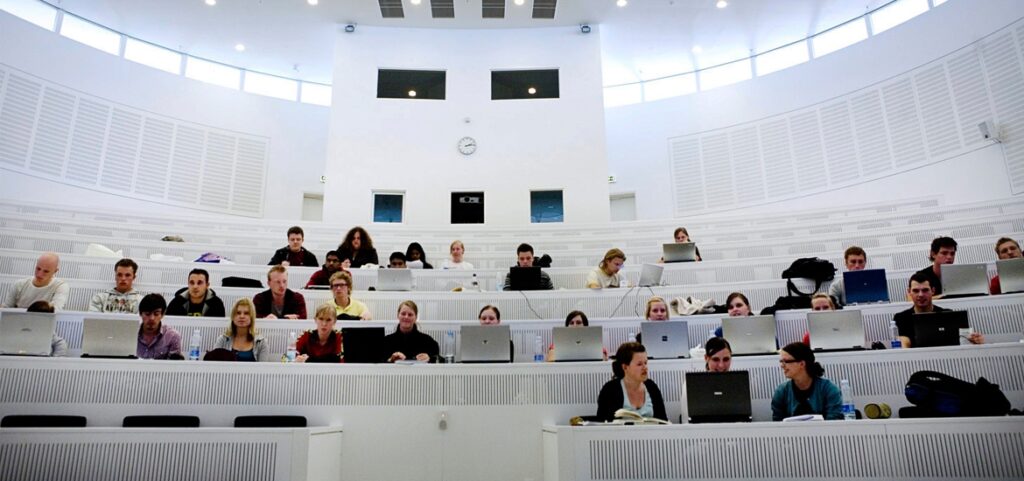Case
Aarhus University: New Consolidated Infrastructure for 1% of Denmark’s population
Aarhus University has grown to one of the biggest institutions for higher education in Denmark, and the most recent merger with five smaller institutions increased the size of the organization with more than 40 percent. A total of 54,000 users (11,000 employees and 43,000 students) are now under one administration. Because of the merger, the […]
Client
Aarhus UniversityConscia office
Denmark

Aarhus University has grown to one of the biggest institutions for higher education in Denmark, and the most recent merger with five smaller institutions increased the size of the organization with more than 40 percent.
A total of 54,000 users (11,000 employees and 43,000 students) are now under one administration. Because of the merger, the complexity of the network reached critical levels, which called for a comprehensive consolidation and rethinking of the entire network design.
Aarhus University sets very high requirements to the robustness, security and management of the network. The quality of the IT infrastructure is crucial to Aarhus University, whose E-mail platform covers what corresponds to 1% of the Danish population. It is e.g. required that the infrastructure supports mobility and connection to a long range of different units, in order for the employees and students to be able to work from all university locations.
“Bringing together different departments is actually a process of development driven by the need for standardization and cost efficiency on all levels,” says Flemming Bøge, CIO and Vice Director at Aarhus University.
“And we had to respond to the consolidation challenge since the university merger meant that we suddenly were faced with an enormous variety of network components and infrastructure. We had to move to a solution with only one supplier in order to simplify administration.”
Design improvements from server room to study hall
Conscia was given the task of designing and implementing one, unified infrastructure that could handle the challenge of migrating from the complex multi-vendor network to a much more coherent setup. Cisco Unified Computing System (UCS) was implemented in the data center, and UCS has since been playing a significant part in Aarhus University’s virtualization strategy. One of the many advantages has been a significant improvement of the IT security, since you no longer need thousands of standalone servers placed in small server rooms across the country, with all the security risks this would entail.
Aarhus University has a strong Bring Your Own Device (BYOD) culture, and Conscia has worked to ensure that the university gets the maximum out of the new infrastructure. Today, the users have access to services and applications both when they are on and outside campus.
“The wireless network must be able to deliver vital study resources regardless of whether the user is on campus, at home or at a café,” says Flemming Bøge who is pleased that this is indeed possible now due to the new infrastructure design.
Top quality service and continued focus on BYOD in the network
Based on a design process with security and redundancy as top priorities, Aarhus University and Conscia succeeded in consolidating the large and complex infrastructure. Finally, the move away from the old infrastructure was completed with a minimum of down time.
Aarhus University has a continuous focus on limiting down time, since a modern educational institution with international ambitions is fully dependant on an always-functioning IT infrastructure. In order to meet the availability expectations from students and scientists, a 24/7 service agreement has been made with Conscia. The agreement ensures that Aarhus University has a detailed overview of all units, fast replacement of defective equipment and direct access to the highest skilled specialists – from the first call to Conscia.
Aarhus University is preparing for the next project, who in the nearest future will increase focus on BYOD. Work is being done with Cisco CleanAir wireless technology, which makes all wireless units within range visible and decreases interference from radio frequencies for optimal wireless network performance. The technology has already made it possible for 800 students to take an eight hour long exam in the same building with stable and consistent access to the wireless network, even though every single student brought with them their own device.
The technical solution in brief
Architecture, design and implementation of a solution consisting of:
- The Cisco Nexus platform, which is designed specifically for meeting very high data center requirements regarding uptime and performance.
- Cisco UCS (Unified Computing System) solution. The heart in the solution is fabric interconnects, which function as both unified fabric switches and contain the UCS Manager for centralized management of the entire UCS system.
- Controller based wireless solution that can handle 2,000 access points.
- Catalyst series 6500, 3750 and 2960.
- Cisco ASA platform for secure remote access.
Do you have any questions?
Contact your nearest Conscia market – we’d love to talk to you and answer any questions you might have.
Related










